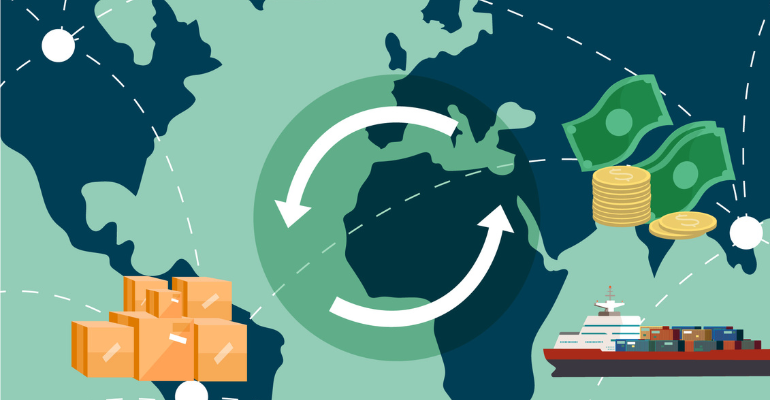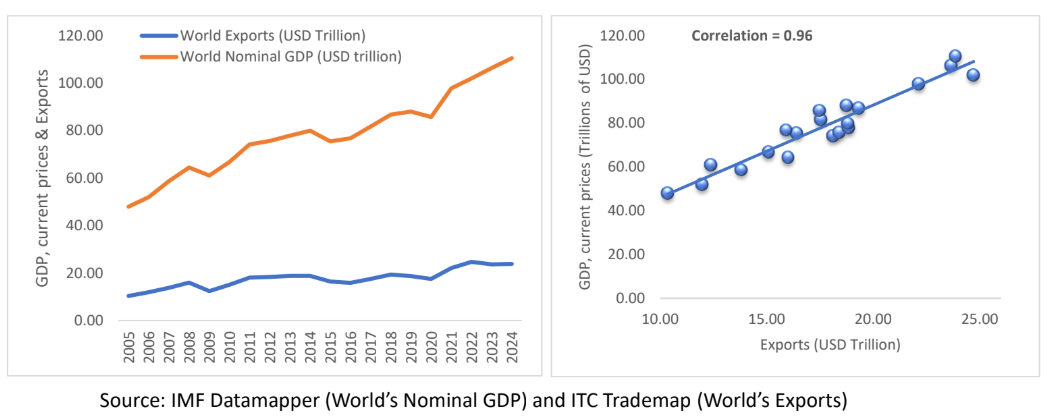Research Reports
Thematic Area: Trade, Investment, and Resilient Supply Chains

Driving Growth Through Exports: Snapshot of Export Strategies for Africa
Introduction
The global economic landscape is in a state of flux, with rising uncertainties because of escalating geopolitical and trade tensions. The year 2024 witnessed intensification of the geopolitical conflict between Russia and Ukraine, in addition, to the conflict in the Middle East. Despite uncertainties, global nominal Gross Domestic Product (GDP) increased by 3.87% from USD 106.43 trillion in 2023 to USD 110.55 trillion in 2024. Exports, on the other hand, expanded by 0.88% from USD 23.66 trillion to USD 23.87 trillion over the same period.
Given the current economic setting, the International Monetary Fund’s (IMF’s) World Economic Outlook April 2025 Report projects global growth at 2.8% in 2025, which is expected to improve to 3.0% in 2026. While growth rates in advanced economies are projected to moderate at 1.4% in 2025 and 1.5% in 2026, economic activity in emerging market and developing economies is expected to rebound from 3.7% in 2025 to 3.9% in 2026.
Table 1: IMF’s Real GDP Forecasts (April 2025)

To propel stronger economic activity, there is an urgent need for collaborative action among major economies to address current economic challenges. This policy brief outlines the two-way relationship between exports and GDP, with a focus on the African continent. The brief also highlights the importance of adopting export- led growth strategies to enhance economic resilience.
Impact of Exports on Economy
World
An economy’s exports not only reflect its manufacturing prowess, but it is also an indication of the efficiency of a nation’s logistical ecosystem, which in turn leads to further investments across sectors. It also generates a multiplier impact across the economy, creating greater employment, enhancing income growth, and bolstering domestic demand for goods and services.
Historical data from 2005 to 2024 suggests that exports are positively correlated with nominal GDP. During this period, global GDP grew from USD 47.98 trillion to USD 110.55 trillion, while exports increased from USD 10.36 trillion to USD 23.88 trillion. With a correlation of 0.96, there is a strong and positive relationship between nominal GDP and exports, as captured by the upward sloping trendline below.
Figure 1: Relationship between World’s Nominal GDP and World’s Exports, USDTrillion, 2005-2024

This strong correlation lends credibility to the export-led growth strategy, suggesting that a focus on export-oriented policies can lead to higher nominal GDP. This growth, in turn, generates spillover effects across various sectors. Exports contribute to the development of strong forward linkages, promoting downstream industries and enhancing a country’s participation in global value chains. These economic developments create incentives for producers to increase output, which further fuels export growth. Overall, strategies aimed at advancing economic development create a circular impact, driving exports and thereby creating incentives for further economic development.
The next section focuses on Africa where the role of exports in impacting growth of the region is briefly explored. Some policy actions are also suggested for boosting exports in the Africa region.
